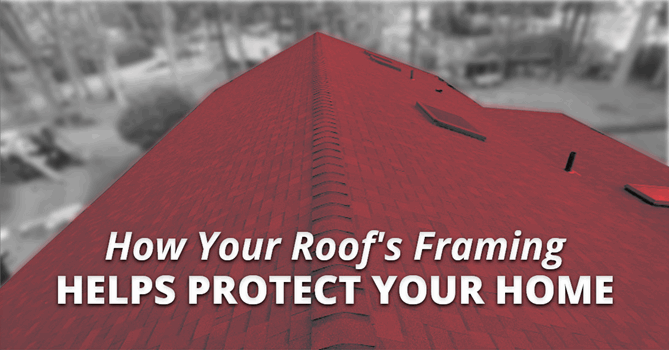How Your Roof's Framing Helps Protect Your Home

Remember the kids’ game with your fingers, “Here is the church, here is the steeple?” When you held up your index fingers, that was not the steeple. That was the roof’s rafters, and the steeple (tower, belfry, lantern, and spire) sits on top of them! Most people are unfamiliar with their roof’s framing members. Let’s fix that.
Rafters Make the Roof
Though many homes today are constructed with prebuilt roof trusses, a lot of Massachusetts homes were stick-built, meaning carpenters measured and cut one board at a time. Your home’s roof is principally a series of common rafters, the angled boards holding up a ridgeboard and your sheathing.
Your finished roof is attached to the sheathing. Rafters are usually spaced 16” apart to ensure they hold up under snow loads. You can find rafters spaced 12” or even 24” apart, however. Rafters are the ribs of your roof. The ridgeboard is the spine.
Corners Turned
For a roof to make a 90-degree turn, you need valley rafters and valley-jack rafters. These specially cut boards make the roof more interesting, allow for right-angle additions to your house, and reduce your home’s boxy look.
All rafters have birdsmouth notches cut into their lower ends to sit on the top plate of your home’s exterior walls. The lower ends are also capped with fascia boards, to which gutters are attached.
Well-ventilated homes have soffit vents to allow air to pass up over the top plate, rising through your attic and exiting by ridge vents along the ridgeboard.
An Integrated System
This greatly simplified, fast tour of your roof’s framing gives you some sense of the complexity of your roof. It is not one part, but an integrated system of components. Each must be in excellent condition to protect your home. Rafters, for example, can rot from roof leaks. Mold can spread across sheathing. Blocked soffit vents can rob your attic of ventilation, shortening your roof’s life.
To ensure your roof is working well and will last many years, get a roof inspection from your nearby residential roofer. An annual inspection and spot repair work will help your home survive all kinds of weather, from winter’s worst storms to heavy summer rains. Connect with us at Couto Construction today to make sure your home’s roof is ready for the rough winters ahead. We provide a full range of roofing and exterior services.